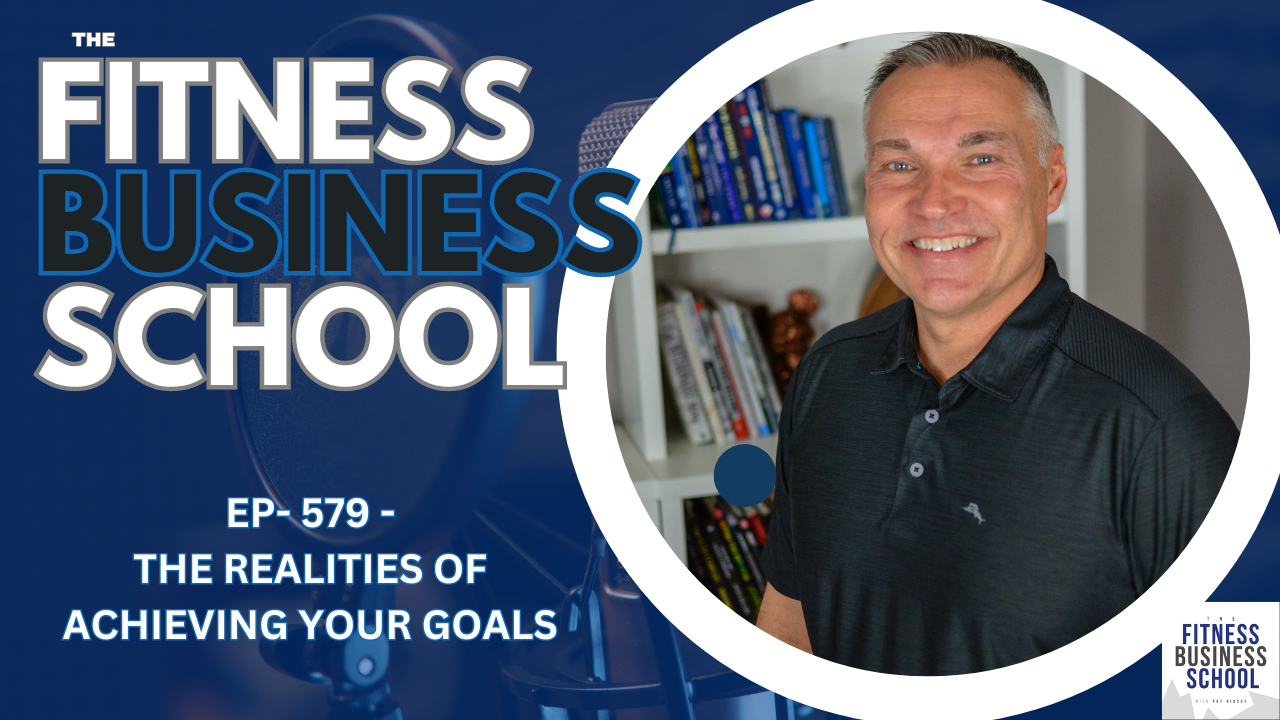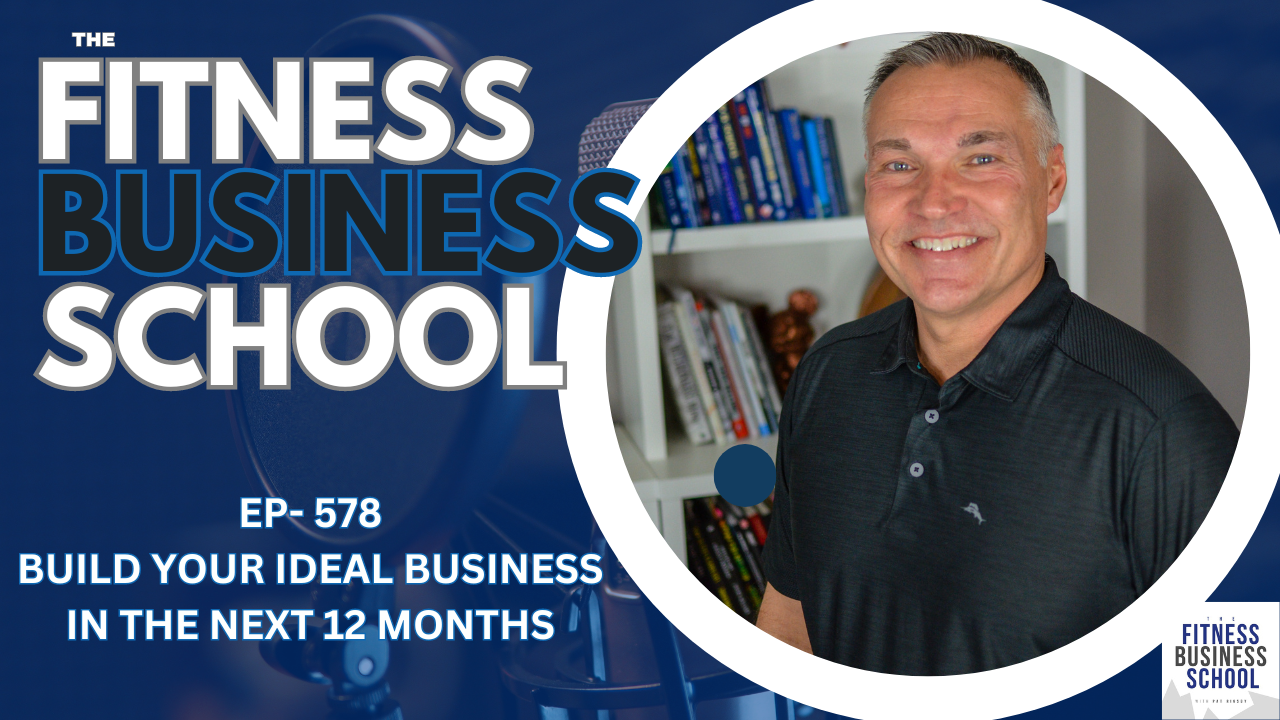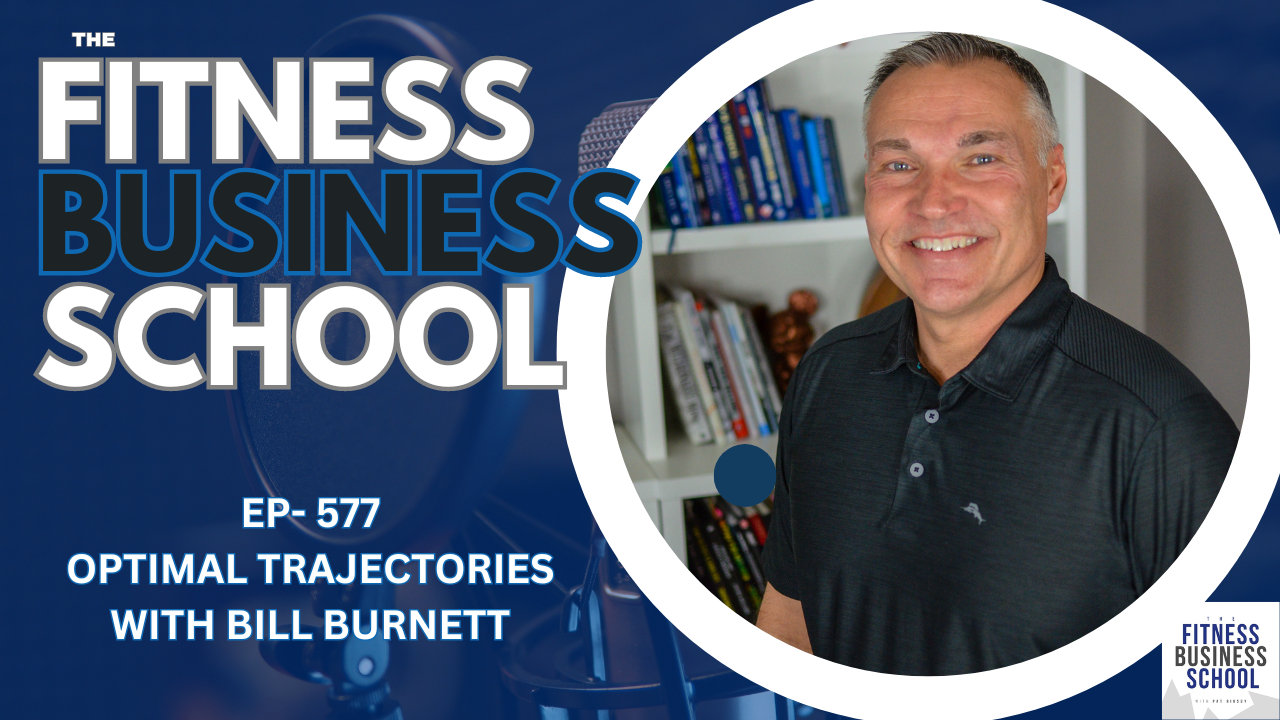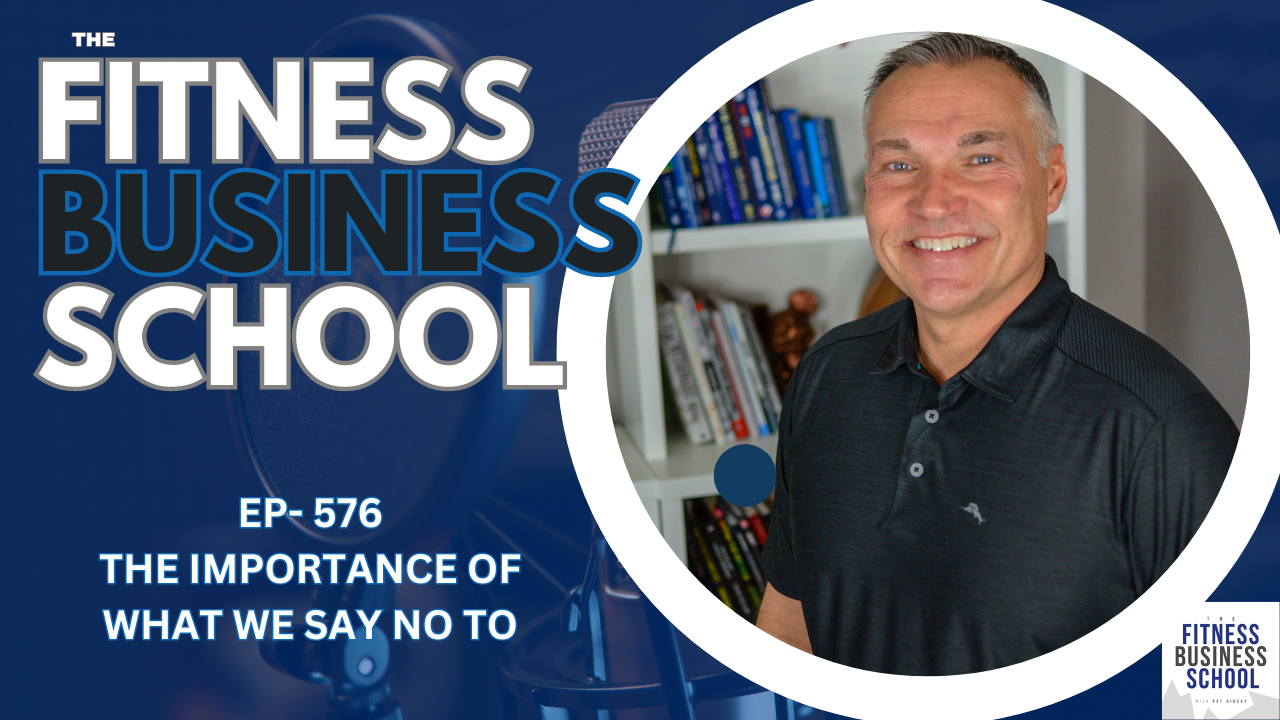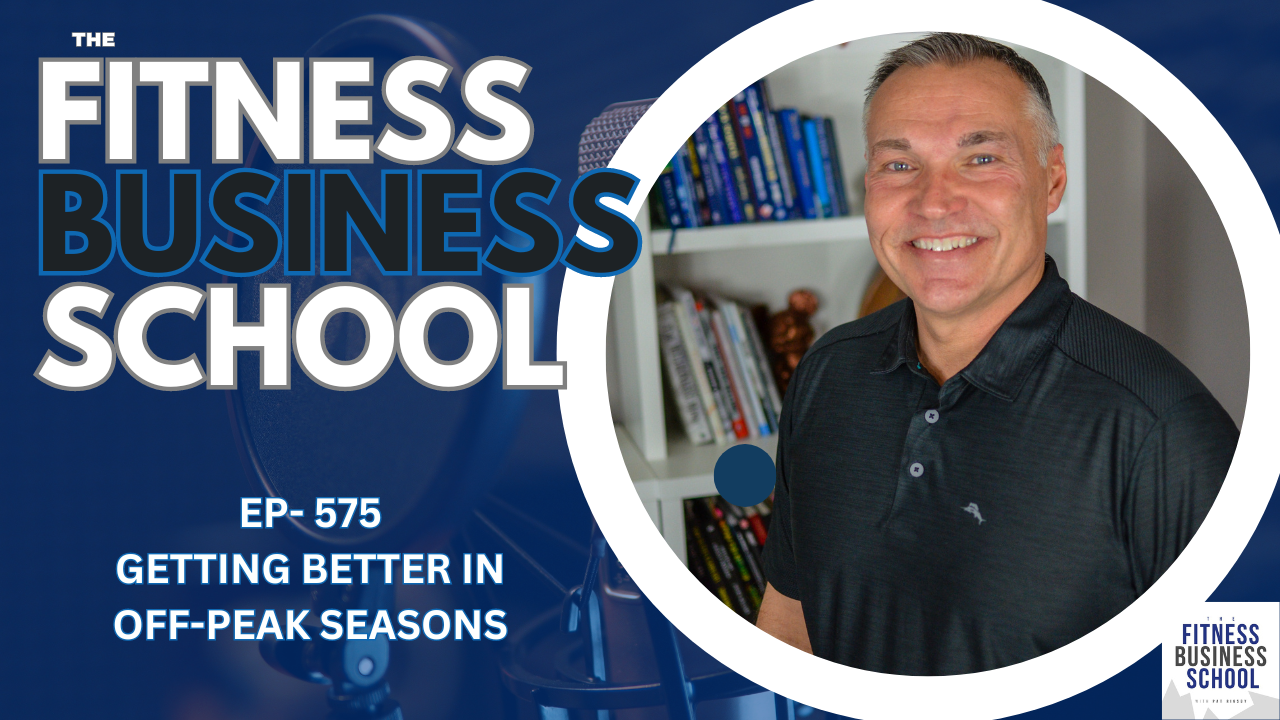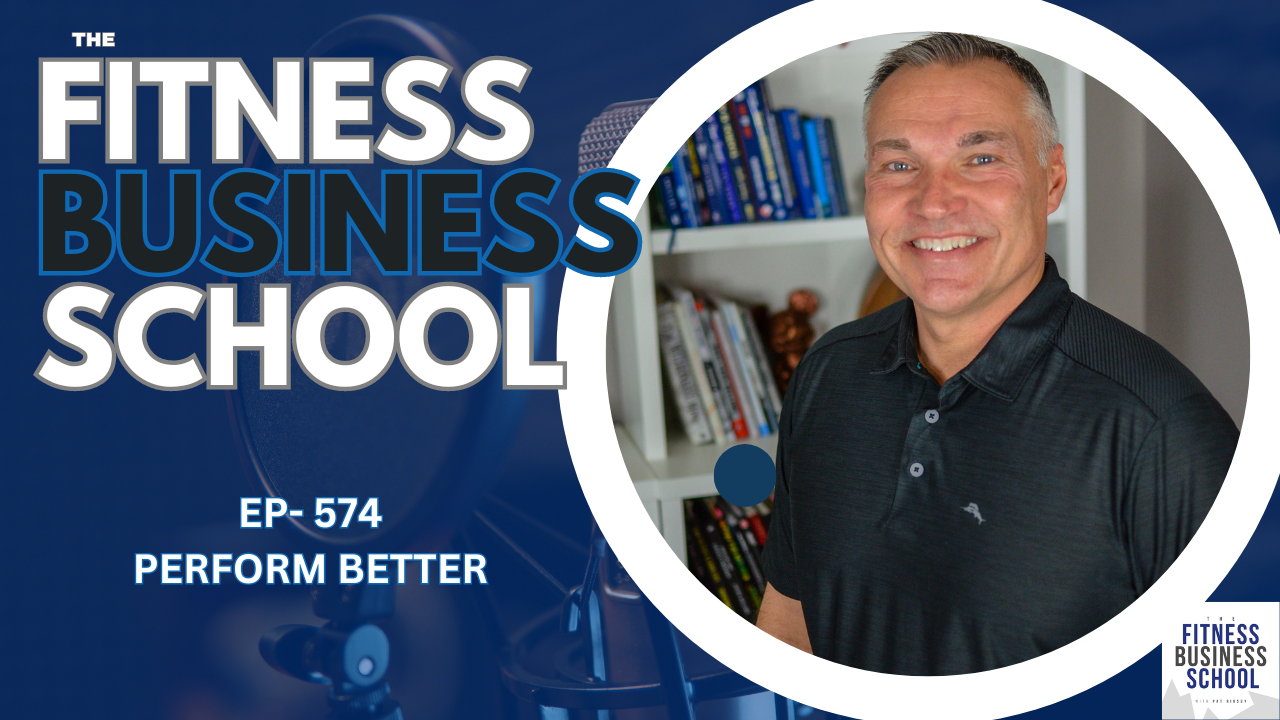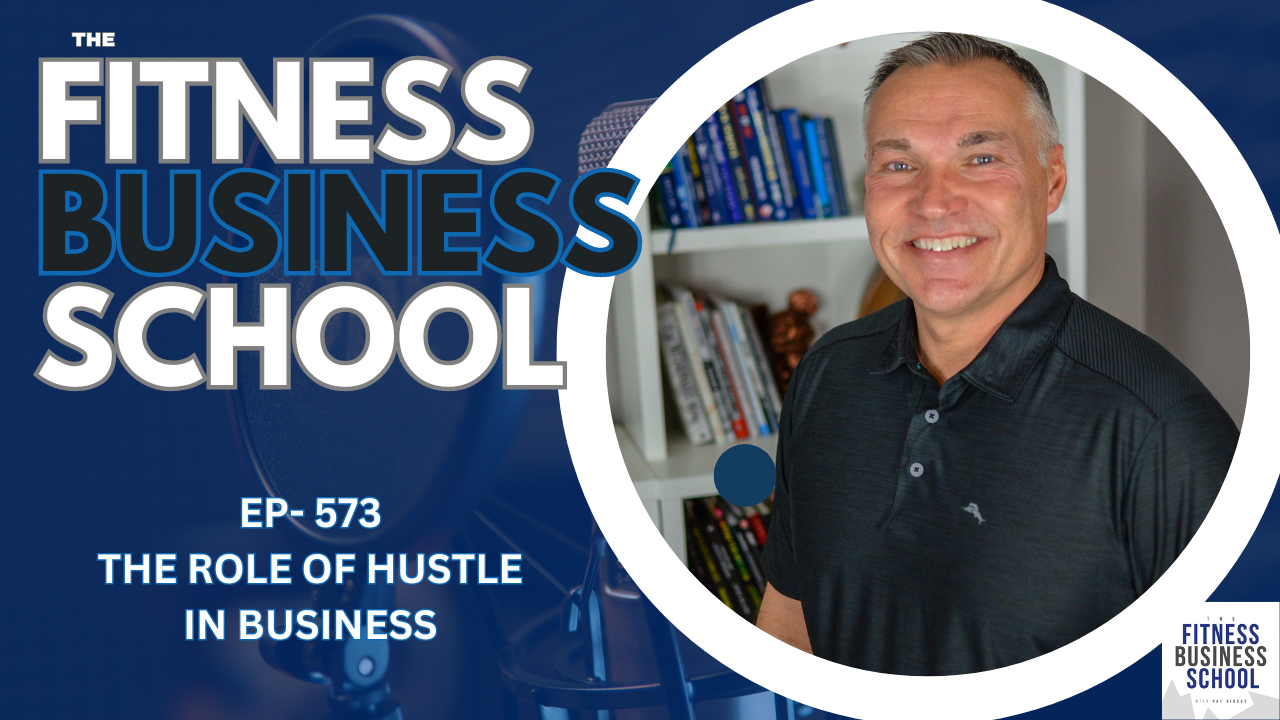Show Notes
00:00 Introduction: Why Most People Get Content Wrong
00:29 The Evolution of Content Marketing
02:19 The Problem with Generic Content
06:45 Creating Valuable and Congruent Content
08:52 Focusing on Quality Over Quantity
09:45 Conclusion and Special Offer
Full Transcript
Hey, Pat Rigsby here and in today’s episode, I want to talk with you about why most people get content wrong. Let’s get to it.
Welcome to the Fitness Business School podcast, the show for fitness business owners who
want to grow their income, increase their impact and improve their lifestyle. Be sure to listen to the end
of this episode because we have a brand new special offer exclusive for listeners. So stay tuned.
One of the kind of hidden blessings about being in the industry as long as I have is I’ve seen this kind of evolution when it comes to marketing and early on in my time as a business owner and then there’s a business coach, if you could, get content out in front of the marketplace. You were setting yourself apart.
If you could get an article published in a newspaper before long, people would write articles and they would be really useful tools for SEO. If you were putting content out there, it was a differentiator. And as things have evolved, and as we’ve gotten so many different. Social media channels and different ways to disseminate content.
It’s not so much a differentiator anymore. In fact, one stat I saw recently said there were 4.6 billion pieces of content produced every day. By most measures, that’s a lot. And you think about it, it’s there’s so much just. Being a participant in this kind of pool of 4.7 billion isn’t really gaining you a competitive advantage.
And then if we think about it from the other perspective, the recipients of this content, the average person checks their phone like 30 times an hour. They get over 140 emails a day. And that’s just a small fraction of the input they get. If you think about people mindlessly scrolling Instagram or Facebook, there’s just so much.
And what I’ve seen in our industry is this kind of default to. Hey, I’m going to just jump in the pool and just do what everybody else is doing. I’m going to share simple little graphics and recipes and just post things that I don’t necessarily know. Accomplish what the intent of posting content is.
In fact, in my mind, the only reason we’re posting content is to get the attention of people who are potentially clients and then to retain that attention. And I don’t know that if you’re saying what everybody else says, and you’re posting things that are pretty bland and generic and could easily be created by AI, or you just bought somebody’s package of social media assets or whatever.
I don’t know how that differentiates you. I don’t know how that. I guess you could say it doesn’t, it’s probably not doing you harm by any stretch other than the fact that there’s an opportunity cost. The time you spent doing that is time you could have spent doing something that moved your prospects closer to you.
It’s not like somebody looks at this and says, Hey, this person posted some bland nutrition guidance or whatever else. So I’m going to not pay attention to them. It’s just, instead it’s, you didn’t do enough to earn attention. And I don’t know that is a useful. Way to spend your time because I know that so many business owners are really challenged with the amount of time they have.
And so if you’re going to invest time in marketing and in selling, you should be doing things that are effective and cutting and pasting stock things, just sharing generic stuff that is not discernible from the rest. I don’t know. That’s a great, great plan. And in fact, I remember years ago, there was a gentleman that then I knew pretty well in the fitness industry, in some ways we were competitors at the time, and he’s done very well for himself as a business owner and he had this automated newsletter that would have an article and a recipe and have a place. It was aesthetically, it was fine. And it was modeled after what print newsletters would have looked like historically, and I would invariably have dozens of people that I would come in contact with as clients, as prospects, whatever, saying, Hey, I send this done for you newsletter.
And there was nothing about it that stood out and it was really generic. I said, how many clients have you gotten from that newsletter? They’re like, none.
And the guy who had the newsletter said part of the reason that he loved it was that people didn’t want to stop sending something after they started, but they couldn’t really quantify it. So there was no standard ROI that they felt like they had to meet. The interesting thing to me was. That guy wrote his own text based newsletters, like the newsletters that I would send, a text based newsletter.
He didn’t send some HTML heavy, graphic induced newsletter that was bland in general and had different articles in it. He sent a compelling, personality focused newsletter that spoke to the prospect and moved them towards the prospect. Becoming a paying client. And in some cases becoming them towards becoming a paying customer of that newsletter.
And I think that if you look at a lot of the people who sell the done for you stuff, it’s always wise to look at what they do, not just what they sell. And if it’s not congruent. Then you probably should pay more attention to what they do, since they’re usually in a pretty strong position as a business owner.
So I’m going to try to get you to think about this differently. I’m going to say, Hey, see, content is a way to earn attention and retain attention to move your prospects closer to you, not just flood their feed with more and more. So ask yourself, this is okay. Is this. Content making the person that I’m trying to reach better.
Is it helping them achieve their goals? Is it helping them solve their problems? And is it valuable? Is it a good. Exchange of their time and attention is, are they happy with what they’re getting in return? It needs to be valuable for that person. So you can earn their future attention. Now I’ll take it a step further.
The other thing about this is it should be congruent. So if you’re getting like, it’s not hard to get attention, right? People have said it for years. If you don’t get people’s attention, y’all like fire or something, right? Like it has nothing to do with what your business is doing though. One thing that I’m always curious about is, one of the most successful lead magnets that you’ll see people do is they’ll have a recipe guide or a cookbook or a bundle of recipes or something like that.
I’m like, that’s great. A hundred percent of the people on earth eat, but far fewer of them are interested in embarking on an exercise program. Far fewer of them want to hire a coach or a trainer. So you haven’t really. gotten qualified people to raise their hand by, by giving them something. It isn’t congruent with what you’re actually doing, unless you are a nutrition coach.
And if you’re a nutrition coach, then lead with nutrition. But if you are a fitness coach, a weight loss coach But a personal trainer, a strength and conditioning coach, then you should probably lead with something that is indicative, like that gets the attention of people who are interested in what you do and indicative of the type of person who’s usually coming through your door.
To sum it up, just keep in mind that more isn’t better is better. And when you create something really good, instead of saying, Oh, I need to make three posts a day or whatever else. Just focus on distributing the things that are really good in more ways and with more frequency. And if you do that, you’re going to see.
The attention from the right people grow. Now that doesn’t mean that you’re going to have the biggest audience because the biggest audience audiences are geared towards reaching people who are interested in the most stuff. But the contest you’re trying to win here isn’t, can I post the most stuff? Can I have the biggest audience?
It’s can I get more clients that are interested in what I do to come in and experience it so we can partner together to help them reach their goals.
Thanks for listening to this episode of The Fitness Business School.
Before you go, I have a quick announcement:
One of of the things that we’ve been doing with our current clients is taking them through this Ideal Business diagnostic and really what it is, this checklist that allows you to pinpoint exactly what your business needs next so you can keep improving, keep growing, and build a business that you love to own, one that pays you well, one that allows you to have the impact you wanna have and one that allows you to have a lifestyle that you truly enjoy.
In this diagnostic, we walk through everything and we do an evaluation and can instantly pinpoint what you need to do next to build that business that you want. I’m going to extend this opportunity to get on with either me or my team and take you through this evaluation and fix your business’s most vital needs fast.
So if we take you through this, you’re gonna be able to make those vital changes that you need to finally have what I call your Ideal Business. If you’d be interested in going through this entirely free, risk-free diagnostic with us and learn what you already have in place, what you’re doing well and where are your greatest opportunities for rapid improvement are just shoot me an email with diagnostic in the subject line to [email protected].
Again, an email to [email protected] with diagnostic in the subject line will get
you scheduled and take you through this evaluation to help you build the business you want.

